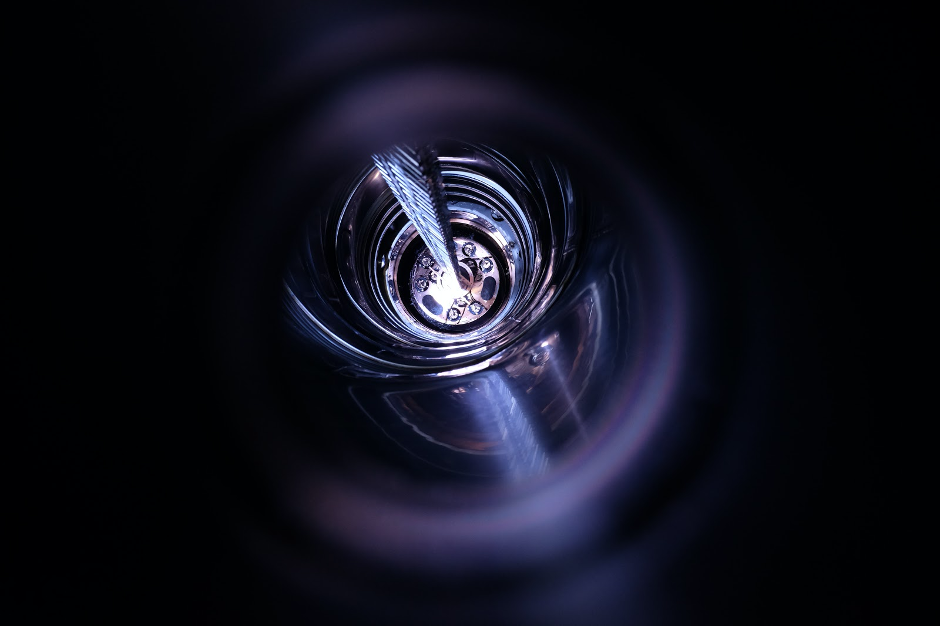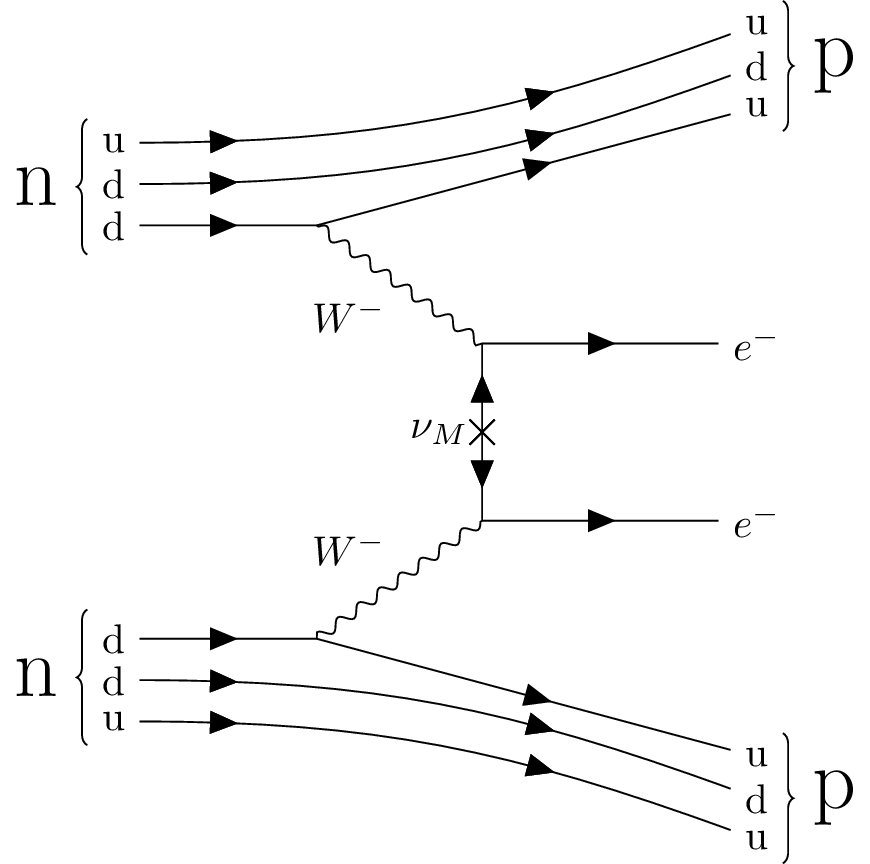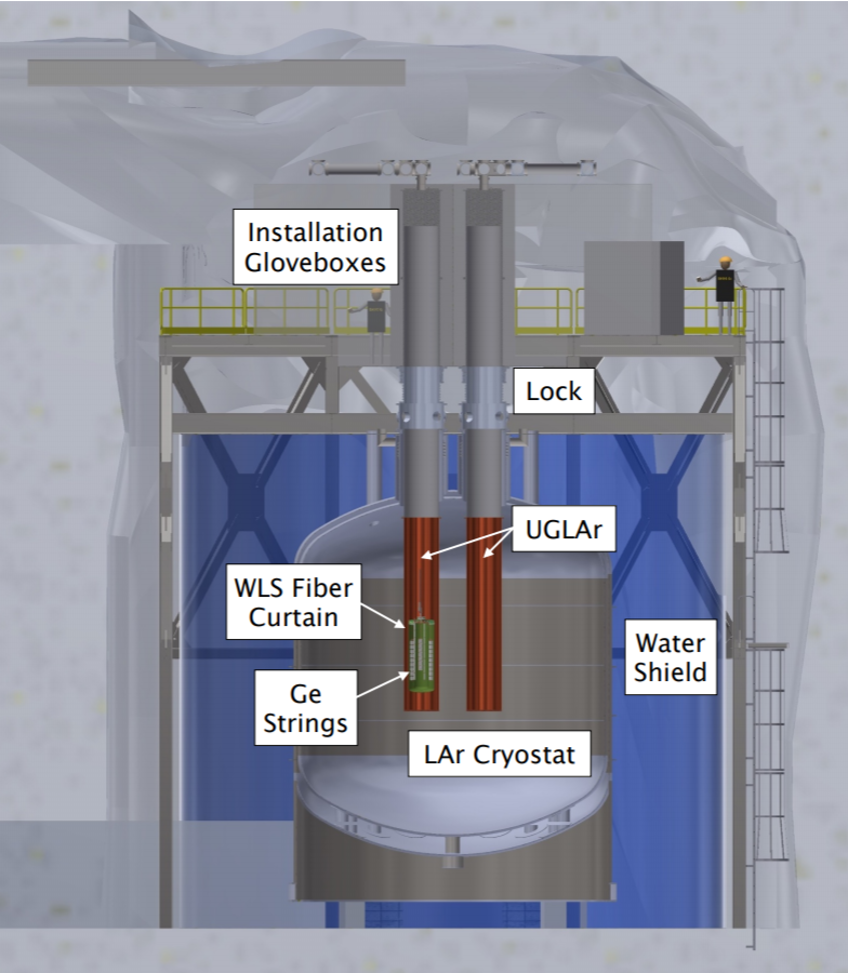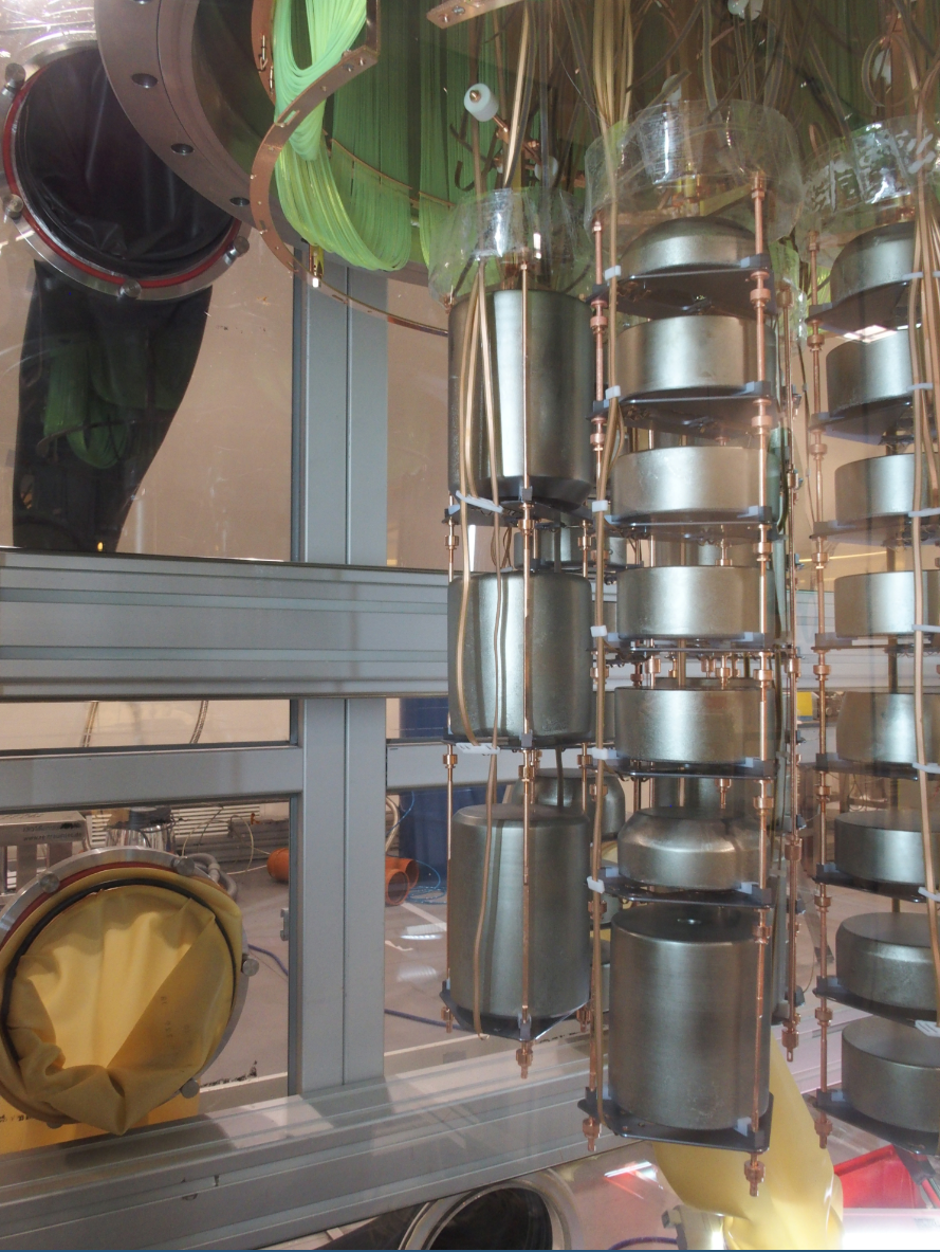Legend at UCL
---Webpage still under construction---
The Large Enriched Germanium Experiment for Neutrinoless double beta Decay, or LEGEND, is a new international experiment and new research group within High Energy Physics at UCL.

The Physics of Legend
LEGEND is a next generation experiment searching for the matter-creating nuclear transitions called neutrinoless double beta decay (0νββ). This is the nuclear transition (A, Z) → (A, Z + 2) + 2e with the half life of this process, highly dependent on nuclear factors, greater than the age of the universe. The discovery of these transitions would constitute evidence for beyond standard model physics.
It has been known for some time from neutrino oscillation experiments that neutrinos have a mass. This was not a part of the original standard model in which neutrinos were massless. There are a number of mechanisms by which a neutrino mass can be added to the Standard Model such as a Dirac or Majorana mass term. However, Schechter and Valle showed that an observation of neutrinoless double beta decay would necessitate a Majorana mass for the neutrino.
Another original feature of the Standard Model that is violated by neutrino oscillations is individual lepton numbers. Instead these can be combined into Baryon – Lepton number or B-L which is still currently conserved. Neutrinoless double beta decay would violate this symmetry by changing lepton number by 2 without changing baryon number. This violation could provide a mechanism for the matter antimatter asymmetry of the universe through baryogenesis.
Both of these therefore motivate the search for neutrinoless double beta decay which would show that B-L is not conserved and that the neutrinos have a Majorana mass from a common mechanism. More detail on the physics of 0νββ can be found here.

The Legend Experiment
The LEGEND experiment, which is currently based in Gran Sasso (LNGS) in Italy, will search for 0νββ from 2021 onwards with semiconductors made from Germanium-76 (Ge76), one of the possible isotopes that can undergo this hypothetical nuclear transition. LEGEND will build on the work of its two parent experiments, the GERDA and MAJORANA collaborations, older 0νββ experiments that have also used Ge76 as a source isotope. The choice of Ge76 offers the key advantage that it can be used as both the source and detector for the experiment, with the detectors boasting the best intrinsic energy resolution amongst all the competitor 0νββ experiments.
LEGEND will utilise High Purity Germanium (HPGe) detectors that are operated as a time-projection chamber (TPC) to reconstruct the topology of events and thus identify signal 0νββ events. Two different geometries of HPGe detector are to be used: BEGe and Inverted Coaxial. The experimental setup will consist of hundreds of such detectors arranged in strings, operated in a bath of cryogenic liquid argon in a cryostat deep underground in Gran Sasso. Liquid argon is useful as it acts as a detector by itself since scintillation light is produced every time some energy is released in it. This scintillation light provides an additional tool to reconstruct the topology of the events and is detected by optical fibers surrounding the detector array.
The LEGEND collaboration itself currently consists of over 200 members across 50 institutes all over the world. LEGEND is following a staged approach in which the number of detectors is progressively increased such that more and more physics is probed in each stage. The first stage of the experiment, so-called Legend-200, will begin taking data in 2021 for 5 years with 200kg of germanium detectors. This stage aims to reach an impressive half life sensitivity of ~ 1027 years, which is a ten-fold improvement on the latest limit. This means there will be a 50% chance of obtaining 3σ evidence for 0νββ with half lives up to this limit, at the design exposure. The following stage, Legend-1000, will comprise of 5 Legend-200 modules, taking the experiment to the ton scale and probing even longer half lives.



The Legend Group at UCL
...
Student Opportunities
...Useful Links
- Legend webpage
- The GERDA Experiment
- The MAJORANA Experiment
- SuperNEMO at UCL
- UCL Legend Twiki (internal users only)

